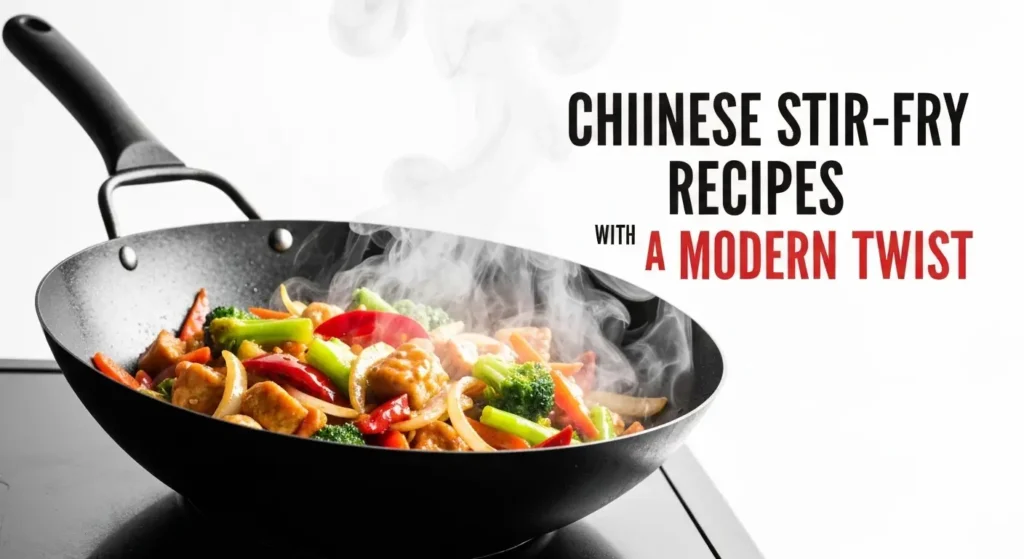There’s something comforting about a steaming bowl of ramen. The aroma of simmering broth, springy noodles, and the perfect toppings can turn a simple meal into an experience. While ramen shops in Japan and around the world serve mouthwatering bowls, you don’t need to travel far to enjoy authentic flavors. With the right ingredients and a little creativity, you can make Japanese-inspired ramen recipes at home that taste just as satisfying.
In this guide, we’ll explore traditional ramen styles, quick weeknight versions, and creative twists. Whether you’re new to cooking or a seasoned foodie, you’ll find a recipe that speaks to your taste buds.
Understanding the Basics of Japanese Ramen
Before diving into recipes, let’s get familiar with what makes ramen special. Ramen isn’t just noodles in broth—it’s a balance of textures, flavors, and toppings.
The Core Components of Ramen
- Broth: The heart of ramen. It can be light and clear or rich and creamy.
- Noodles: Typically wheat-based, with a chewy bite.
- Tare (seasoning base): Miso, soy sauce, or salt-based seasoning that defines the soup’s flavor.
- Toppings: From chashu pork to nori sheets, toppings elevate the bowl.
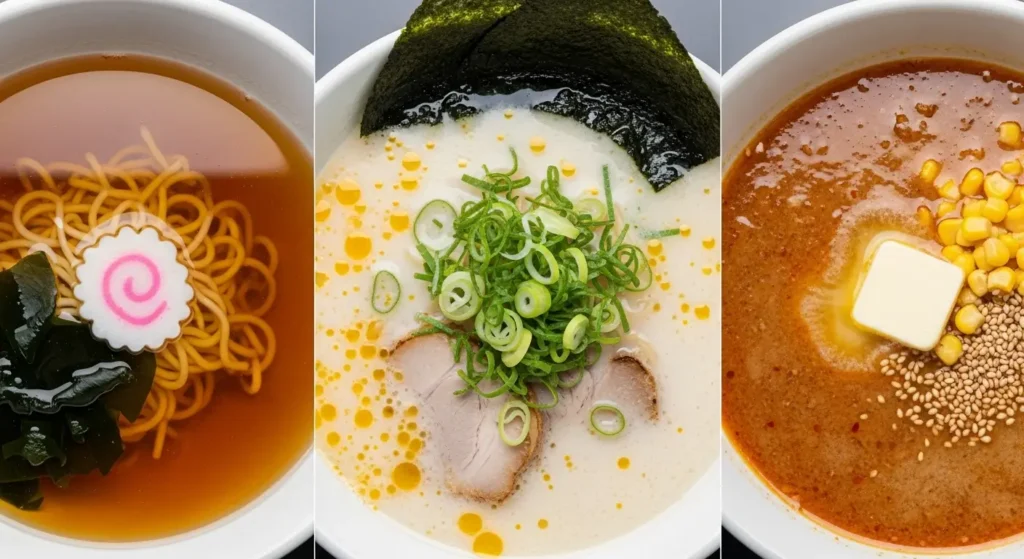
Popular Types of Japanese Ramen
Each region of Japan has its own ramen specialty. Here are the four most famous varieties you can recreate at home:
1. Shoyu Ramen (Soy Sauce-Based)
This Tokyo classic features a clear, brown broth seasoned with soy sauce. It’s savory, slightly tangy, and pairs perfectly with thin noodles.
2. Miso Ramen (Fermented Soybean Paste-Based)
Originating in Hokkaido, miso ramen has a rich, slightly sweet, and umami-packed flavor. It’s often topped with corn, butter, and bean sprouts.
3. Shio Ramen (Salt-Based)
The lightest of all ramen styles, shio ramen has a clear, delicate broth that highlights the natural taste of the ingredients.
4. Tonkotsu Ramen (Pork Bone Broth)
Known for its creamy, milky broth, tonkotsu ramen is slow-simmered for hours until the pork bones release their collagen. It’s indulgent and hearty.
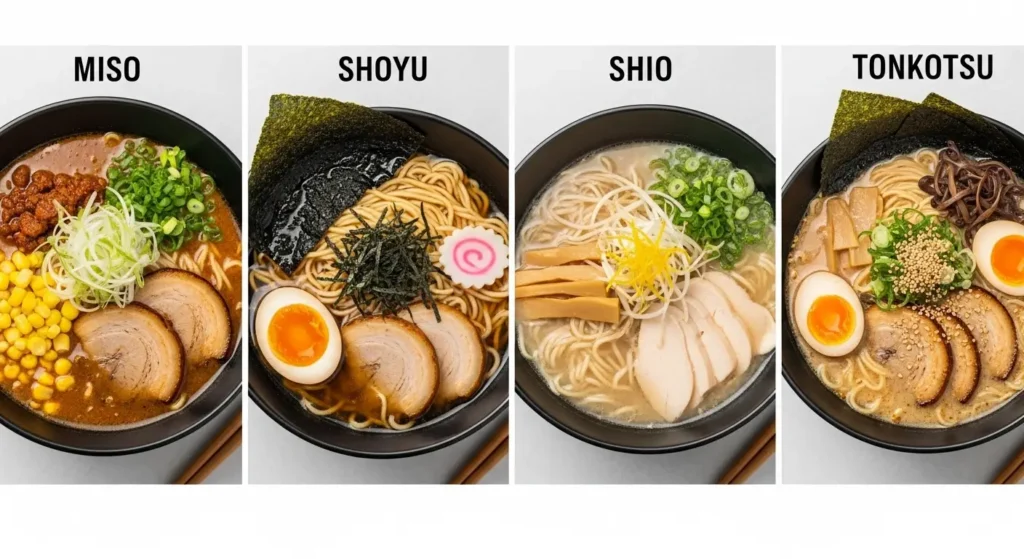
Easy Japanese-Inspired Ramen Recipes You Can Try
Now, let’s get into the cooking! Here are some approachable ramen recipes for home chefs.
Also Read: Easy Mediterranean Chickpea Salad Recipes for Beginners
Shoyu Ramen Recipe (Soy Sauce Ramen)
Ingredients:
- 4 cups chicken broth
- 2 tbsp soy sauce
- 1 tbsp mirin (or substitute with rice vinegar + sugar)
- 2 packs ramen noodles
- Soft-boiled eggs, sliced green onions, and nori for topping
Instructions:
- Heat the chicken broth in a pot. Stir in soy sauce and mirin.
- Cook ramen noodles separately and drain.
- Assemble noodles in bowls, pour broth, and add toppings.
👉 Tip: For extra depth, simmer the broth with garlic and ginger before serving.
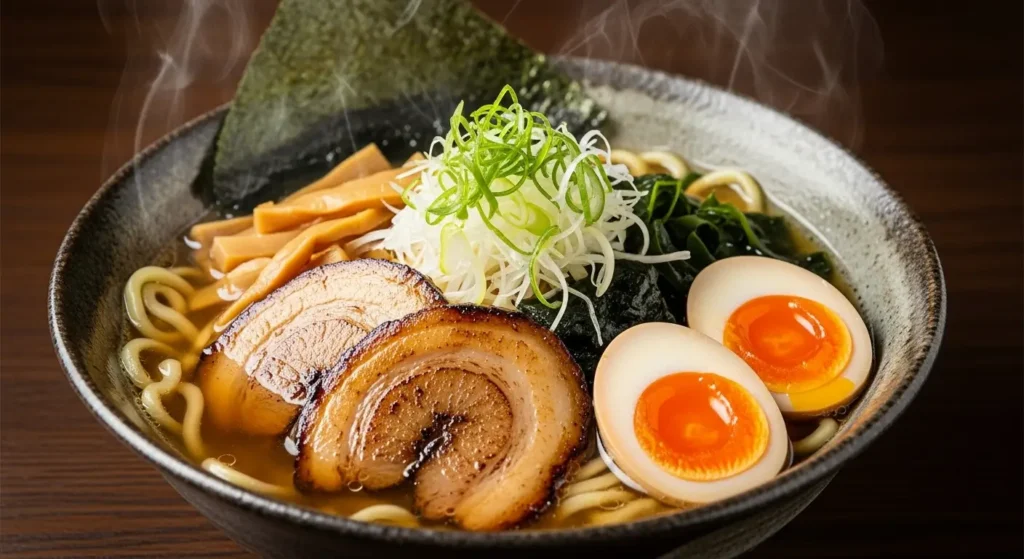
Miso Ramen Recipe (Hokkaido Style)
Ingredients:
- 4 cups vegetable or chicken broth
- 2 tbsp miso paste (red or white)
- 1 tsp sesame oil
- 1 clove garlic, minced
- 1 cup bean sprouts
- Ramen noodles
Instructions:
- Heat sesame oil in a pot, sauté garlic until fragrant.
- Add broth and whisk in miso paste until dissolved.
- Cook noodles, then serve with broth and toppings like corn and butter.
👉 Tip: Add chili paste for a spicy miso ramen twist.
Creative Ramen Twists for Home Cooking
You don’t always need authentic Japanese ingredients to enjoy ramen. Try these fun adaptations:
Vegetarian Ramen with Tofu
- Use mushroom broth for deep umami flavor.
- Top with crispy tofu cubes, bok choy, and shiitake mushrooms.
Ramen Stir-Fry
- Skip the soup and turn your noodles into a stir-fry with soy sauce, sesame oil, and veggies.
Breakfast Ramen
- Add bacon, a fried egg, and a drizzle of soy sauce for a morning twist.
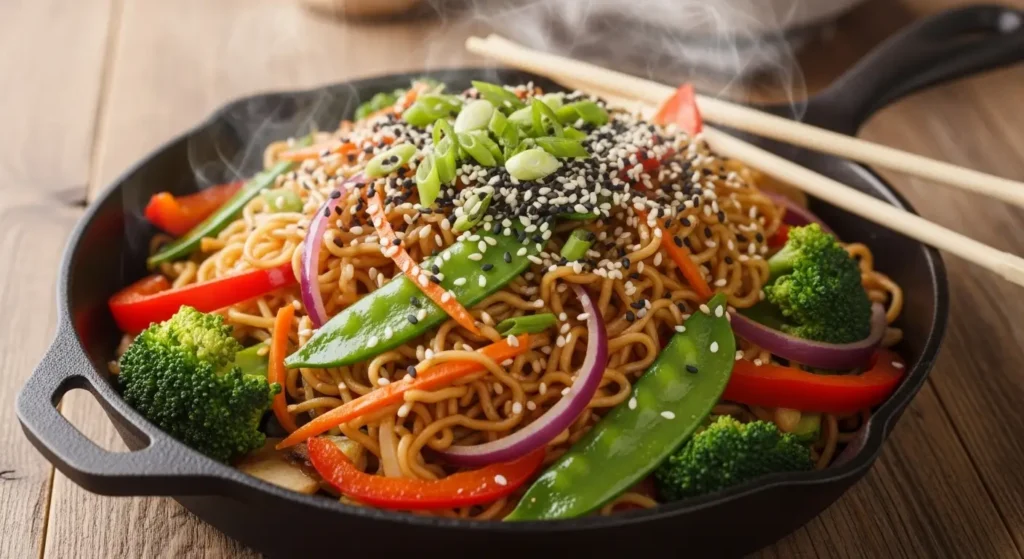
Essential Tips for Cooking Ramen at Home
Cooking ramen is about balance and layering flavors. Here are some tips to elevate your homemade bowls:
- Marinate eggs in soy sauce and mirin for deeper flavor.
- Simmer broth longer for richer taste, especially for tonkotsu-style ramen.
- Experiment with noodles—thick, thin, wavy, or straight.
- Don’t overcook the noodles; keep them slightly firm for the best texture.
Quick Comparison of Ramen Styles
| Ramen Type | Flavor Profile | Best Toppings | Cooking Difficulty |
|---|---|---|---|
| Shoyu | Savory, tangy | Egg, nori, scallions | Easy |
| Miso | Rich, umami | Corn, butter, sprouts | Medium |
| Shio | Light, salty | Chicken, fish cake, veggies | Easy |
| Tonkotsu | Creamy, hearty | Pork belly, garlic oil | Hard (slow-cooked) |
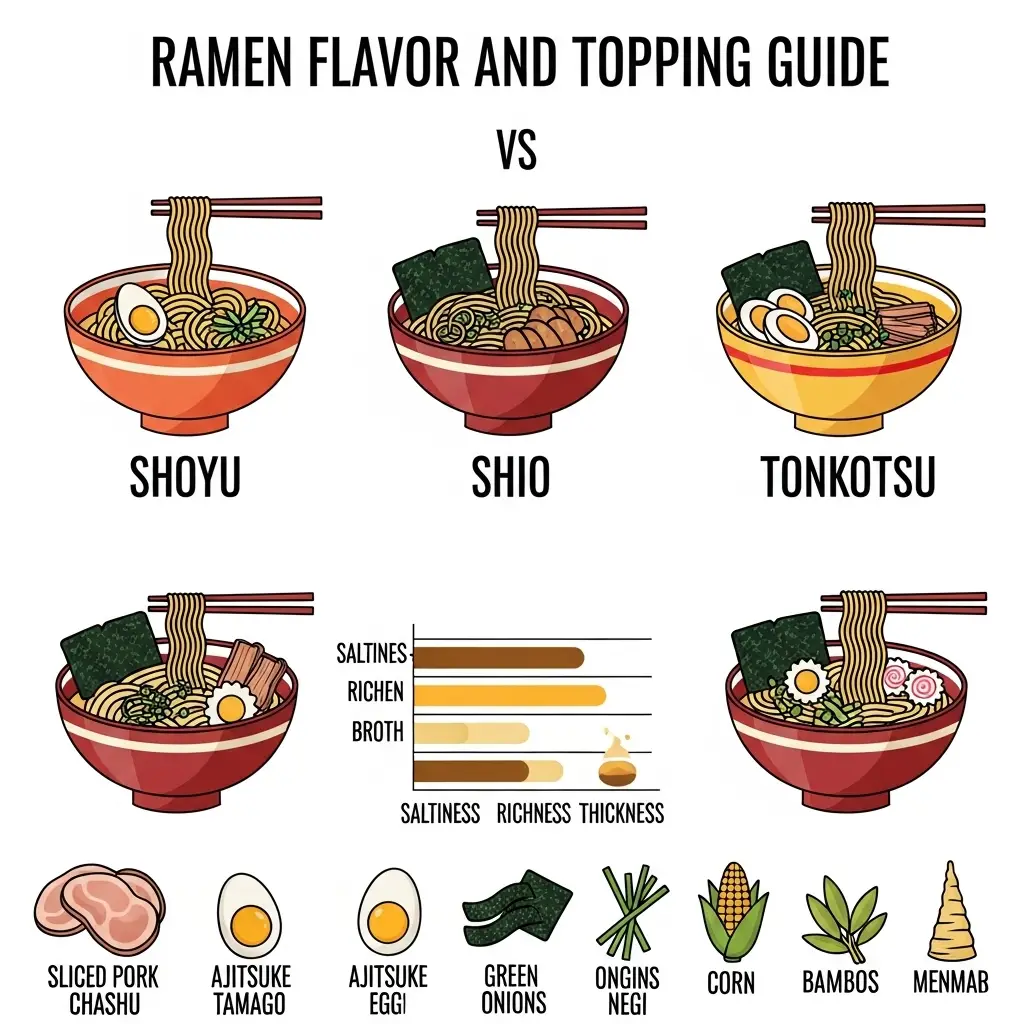
Key Takeaways
- Japanese-inspired ramen recipes are easy to recreate at home with simple ingredients.
- Shoyu, miso, shio, and tonkotsu are the four classic ramen styles.
- You can add your own twist with vegetarian, stir-fry, or breakfast ramen.
- Balance between broth, noodles, and toppings makes ramen truly delicious.
Frequently Asked Questions (FAQ)
1. Can I use instant noodles to make ramen?
Yes! While fresh noodles are best, instant noodles are a quick and affordable substitute. Just improve the broth with fresh ingredients.
Also Read: Easy Italian Pasta Recipes for Beginners
2. How long does it take to make ramen broth?
Simple broths can be ready in 20 minutes, but traditional tonkotsu broth may take 8–12 hours.
3. What toppings are essential for ramen?
Soft-boiled eggs, sliced pork, green onions, and nori are classics. But you can add mushrooms, corn, or tofu as well.
4. Can I make ramen gluten-free?
Yes, substitute wheat noodles with rice noodles or gluten-free ramen noodles available in stores.
5. Is ramen healthy?
Ramen can be balanced and nutritious if you use lighter broths, add vegetables, and control sodium levels.
Conclusion
Ramen is more than just a bowl of noodles—it’s comfort, tradition, and creativity in one dish. By experimenting with Japanese-inspired ramen recipes at home, you can enjoy restaurant-style flavors without leaving your kitchen. From classic shoyu and miso to fun breakfast twists, there’s a ramen for every craving.
So grab your chopsticks, simmer some broth, and start creating your own ramen masterpiece today.





